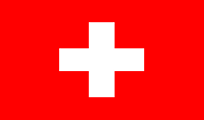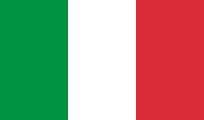A wine region all its own
Punica


Grand red wine made from the Carignano grape, indigenous to sunny Sardinia.
Sella & Mosca


The pioneer of top-calibre Sardinian winemaking has been producing organically for many years.
Sardinians are known for their independent way of life. This spirit of independence can be seen in their wine as well.
Sardinia is a world unto itself. Of all Italian islands, it is the farthest from the mainland. It is separated from the west coast of the peninsula by 200 kilometres of sea. Of course that doesn’t mean the island has seen no visitors during its long history. Quite the contrary. Due to its strategic location, it has been invaded by the Carthaginians, Romans, Byzantines and Arabs. It was the Spanish who ruled the island the longest, around 400 years in total. It wasn’t until 1718 that Sardinia became part of Italy.
The Spanish legacy
So it should come as no surprise that Sardinia’s most famous grape is a Spanish variety. The Sardinians will tell you that Cannonau is a native grape. But a great many of the mutations which can be found in Spain give very strong reasons to suspect that the grape originated in the Iberian Peninsula. In Spain this grape is called Garnacha; in the south of France, Grenache. It yields highly quaffable wines, rich in spice and a fruity sweetness – quite unlike the island’s second most important red wine grape, Carignano. It impresses with its rich colour, acidity and tannins, as well as a lavish plum-like fruitiness. Excellent wines are produced from the bush vines which winemakers cultivate in the Carignano del Sulcis area in the island’s south-west.
Exceptionally high quality
Among white wine, the Vermentino stands out. The best examples come from the Gallura region in the arid hinterland of the picturesque Costa Smeralda. Thanks to a combination of heat and sea breezes, grapes of extraordinary concentration grow here. An inside tip: sweet wines made from the Malvasia grape are experiencing a revival.
In its heyday, Sardinia had around 70,000 hectares of vineyards. There are still about 43,000 hectares today. This is good news for the quality of the wine, because it used to be that the lion’s share of Sardinian wine was exported as a mass product. Today, over 80 per cent of the wine bears the doc or igt seal.
A cuisine of shepherds and farmers
Given the fact that Sardinia is an island, you may assume that the diet consists mainly of fish. This is far from the truth. For a long time, Sardinians were distrustful of the sea – little wonder for a people who were conquered so many times! A Sardinian proverb says: «All bad things come from the sea.» Instead, most Sardinian food comes from the simple yet flavourful cuisine of shepherds and farmers. People live off of what the mountains and fertile lowlands yield. Around half the island is pasture land. This land is grazed mainly by sheep, whose milk is used to produce the famously piquant Pecorino sardo. Other island food includes suckling pig, spit-roasted wild boar and rustic stews. A particular speciality is the Carta da musica, meaning «sheet of music». This is crispy, paper-thin flatbread that can be kept for long periods – shepherds used to carry it with them in their bundle. All that being said, Sardinia actually does have a delicacy from the sea: bottarga, which is the dried roe of grey mullet. It has an intense flavour redolent of iodine, salt and, of course, fish. It is used as a pasta seasoning, very thinly sliced, though it is also simply delectable on fresh bread. And speaking of the sea: anyone who has the opportunity to travel to Sardinia should not miss a visit to one of the secluded grottoes, some of which can only be reached by boat.
docg areas in Sardinia
Vermentino di Gallura
doc areas in Sardinia
Alghero, Arborea, Campidano di Terralba oder Terralba, Cannonau di Sardegna, Carignano del Sulcis, Girò di Cagliari, Malvasia di Bosa, Cagliari, Mandrolisai, Monica di Sardegna, Moscato di Sardegna, Moscato di Sorso-Sennori oder Moscato di Sorso oder Moscato di Sennori, Nasco di Cagliari, Nuragus di Cagliari, Sardegna Semidano, Vermentino di Sardegna, Vernaccia di Oristano
Key producers
Argiolas, Cantina Santadi, Ferruccio Deiana, Punica, Sella & Mosca





Validate your login